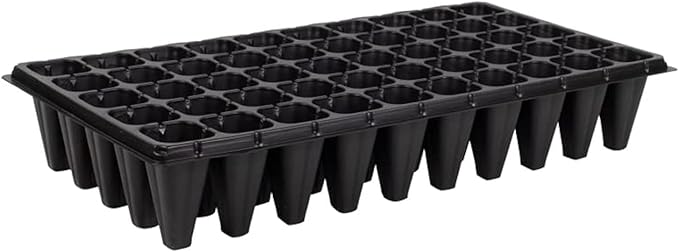It’s Potato Planting Time
If you’ve never eaten a homegrown potato, you don’t know what a real potato tastes like

Ancient Incas are probably the first people to cultivate potatoes thousands of years ago. Thanks to European explorers, who transported this important crop around the world, everyone else can enjoy potatoes too.
There are hundreds of different delicious potatoes to plant and grow in ordinary vegetable gardens, raised beds, and even trash bags.
Potatoes are one of the easiest root crops to grow, but it pays to know the basics for planting, managing, and harvesting.
Selecting potatoes
When selecting potatoes for your garden, choose varieties based on how you’ll use them in the kitchen. Some potatoes are naturally better for frying and baking; others are better for boiling. It all depends on how much starch they contain. There are familiar russets, as well as red, white, and even blue potatoes to plant and grow.
Study potato descriptions to check for the number of days from planting to harvest. If you’d like a sooner harvest, plant early- and midseason-maturing varieties. If you find you can’t wait that long, any potatoes can be harvested as “new” potatoes while the vines are still green.
You may also want to look for potato varieties that have some insect-pest resistance. For example, some varieties are specially bred with hairy leaves as protection from flea beetles and potato leafhoppers.
Purchase and plant only certified seed potatoes to prevent spreading potato diseases. Potatoes from the grocery store aren’t good for planting because most have been treated to keep them from sprouting.
Preparing the planting area
Potatoes like cool weather, and spring is the time for planting. Plan on planting a few weeks before the last average frost date for your region.
Potatoes prefer a loosely packed, well-drained soil that’s like a sandy loam. Improve clay or sandy soil by deeply digging in high-quality compost. Add fertilizer, but make sure it is dug deeply or applied to the side of the growing space so it doesn’t come in contact with the planted seed potatoes.
Potato tubers grow underground on stems, so avoid compacting the soil. Also avoid planting tubers where tomatoes, peppers, or eggplants were grown the previous year to keep plants healthy.
Planting in vegetable beds is only one way to grow potatoes. Because tubers develop on stems above their roots, they can be grown in raised beds, wooden potato boxes, inside stacks of discarded tires, and in bales of straw.
Potatoes are planted from tuber pieces or small seed potatoes. About a week before planting, cut seed potatoes into pieces that are about 1½ inches in size, weigh several ounces, and have at least one “eye,” or bud. Keep the cut pieces in a cool location for about seven days before planting.
Using best practices for planting potatoes
Plant tuber pieces when the soil is dry and has warmed to about 45° to 65°F, and when the likelihood of a hard freeze has passed. Dig a trench in the garden, and plant each piece 4 inches deep and about 10 to 12 inches apart in a row; rows need to be at least 24 inches apart.
Lightly cover the pieces with soil. As the potato plant grows, you’ll need to continue covering the top of the plant, filling in the trench as you go. An alternative is to cover the tops of the potato plants with clean, weed-free straw.
Managing the potato crop
Potatoes grow into bushy and sprawling plants that like consistently moist soil. Mulch helps with soil moisture and also keeps weeds out of the garden.
Potatoes have only a few needs once they’re planted. When plants sprout and start to grow, you’ll need to gently hill soil (or add straw) around the plant. Hilling is a method for keeping the soil cool and also allowing room for potatoes to develop.
Additional hilling is needed throughout the season to protect the potatoes from the sun. Potatoes will turn green and bitter if they’re exposed to sunlight for too long. Too much green skin can make the potatoes toxic if eaten in large quantities.
Another key to growing potatoes is to pay attention to the soil’s moisture content. If there’s too little water the plants might not set potatoes, or the potatoes just won’t grow. Too much water can make for potatoes that turn soft and start to rot in the ground.
Plants will use the most water when the vine is actively growing and potatoes are developing. When the vine starts to decline, reduce the amount of watering.
Knowing when to harvest
Fall is harvest time for the potato crop, especially after the first frost. Several weeks after the vines have died, the potatoes will be ready to dig. Use a garden fork to carefully lift potatoes from the ground.
Keep potatoes at a temperature of 50° to 60°F for a week or so to let them cure, then place them in a cool, dark place for long-term storage in a basement or cellar where temperatures are around 40°F. Don’t store potatoes in the refrigerator or they’ll develop a high sugar content that changes the fresh potato taste.
Fine Gardening Recommended Products

A.M. Leonard Deluxe Soil Knife & Leather Sheath Combo
Fine Gardening receives a commission for items purchased through links on this site, including Amazon Associates and other affiliate advertising programs.

The New Organic Grower, 3rd Edition: A Master's Manual of Tools and Techniques for the Home and Market Gardener, 30th Anniversary Edition
Fine Gardening receives a commission for items purchased through links on this site, including Amazon Associates and other affiliate advertising programs.

Nothers RooTrimmer 50 Cell, 10pcs
Fine Gardening receives a commission for items purchased through links on this site, including Amazon Associates and other affiliate advertising programs.






Comments
Log in or create an account to post a comment.
Sign up Log in